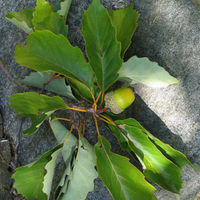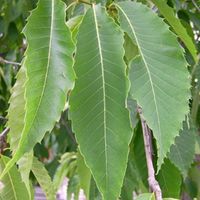Chestnut Oak : Where Its Found

Highlighted area shows the regions to which the Chestnut Oak is known to be native (Elbert Little, 1971)
Where It’s Found
The Chestnut Oak is a deciduous tree native to North America as part of the White Oak group. It is well known for being one of the most prominent trees found growing in the Appalachian Mountains and surrounding hill country. Their region of distribution extends from southern Maine through New York to southern Ontario, over and down to the southern tip of Illinois, and reaching as far south as central Alabama and Georgia while for the most part avoiding the coastal plain.
The tree is native to Vermont and can be found throughout the western side of Vermont south of Burlington scattered richly along the western slopes of the Green Mountains. The Chestnut Oak is known for its strong disposition to growing on mountain ridges, hence the name Quercus “montana”. Compared to trees of the same family it survives notably well in sandy, rocky, or infertile soils with low moisture-holding capacity. Though it grows best in rich stream-side soils, it’s aptitude for growing along dry, rocky surfaces allows it to outcompete most other trees of similar size, making it the dominant species of many Appalachian Mountain ridges.
The common name of the chestnut oak is derived from the similarity in the shape of its leaves to that of the American Chestnut, another tree from the same family (Fagaceae) that was very prominent in the Appalachians. Ironically, it was the demise of the American Chestnut due to the introduction of the chestnut blight fungus in the early 1900’s that lead to the surge in the number of Chestnut Oaks, White Oaks, and Northern Red Oaks across the region. These trees having better ability to resist the disease have subsequently come to dominate in the wake of the Chestnut’s departure.


